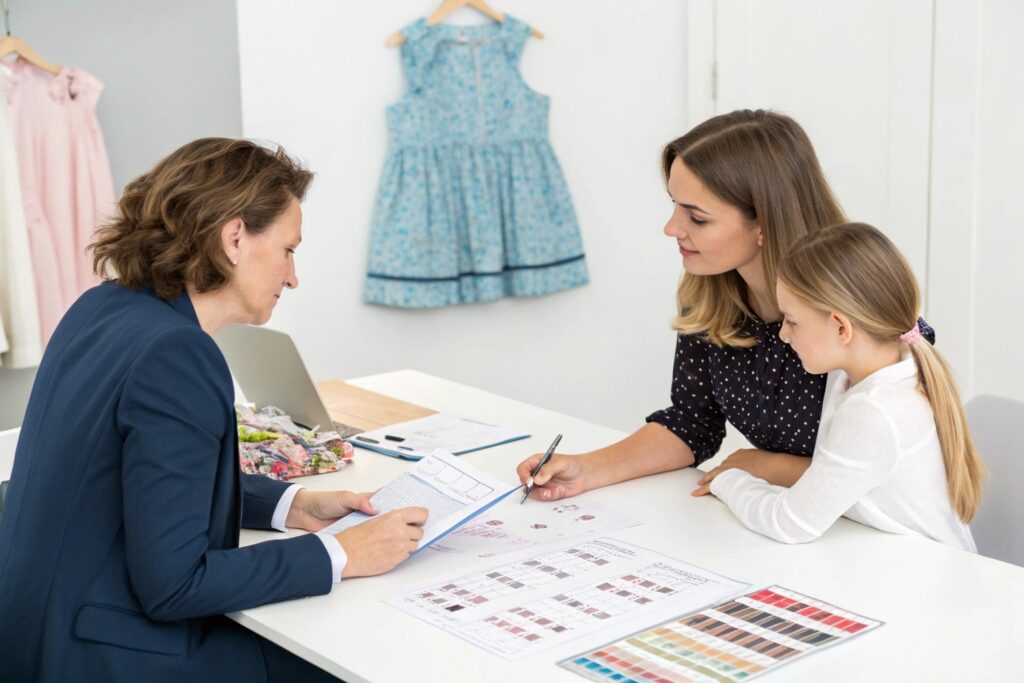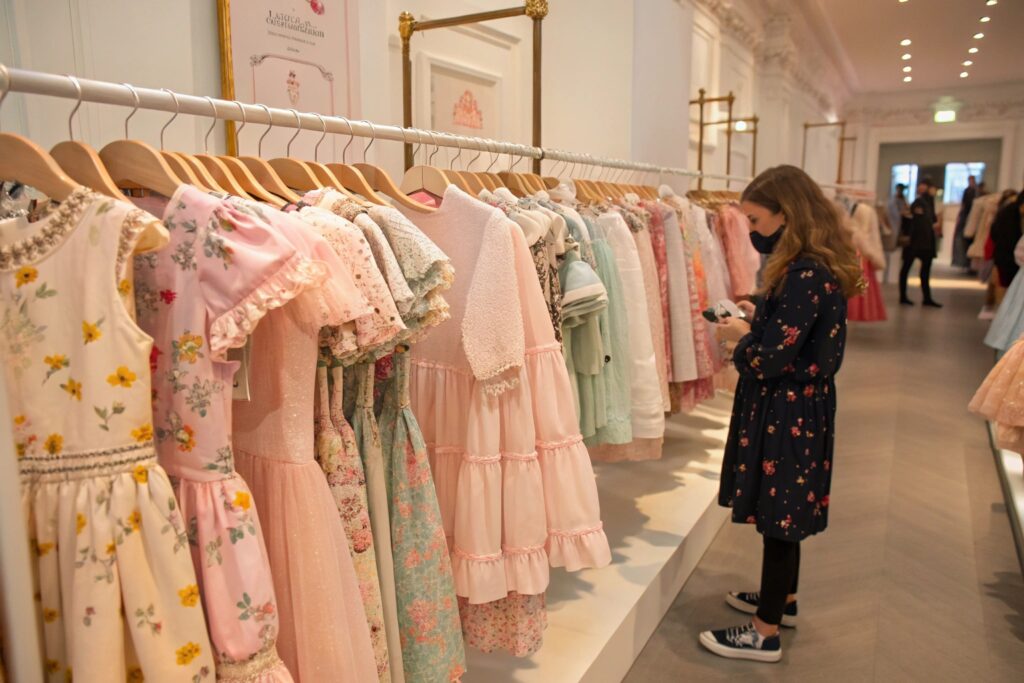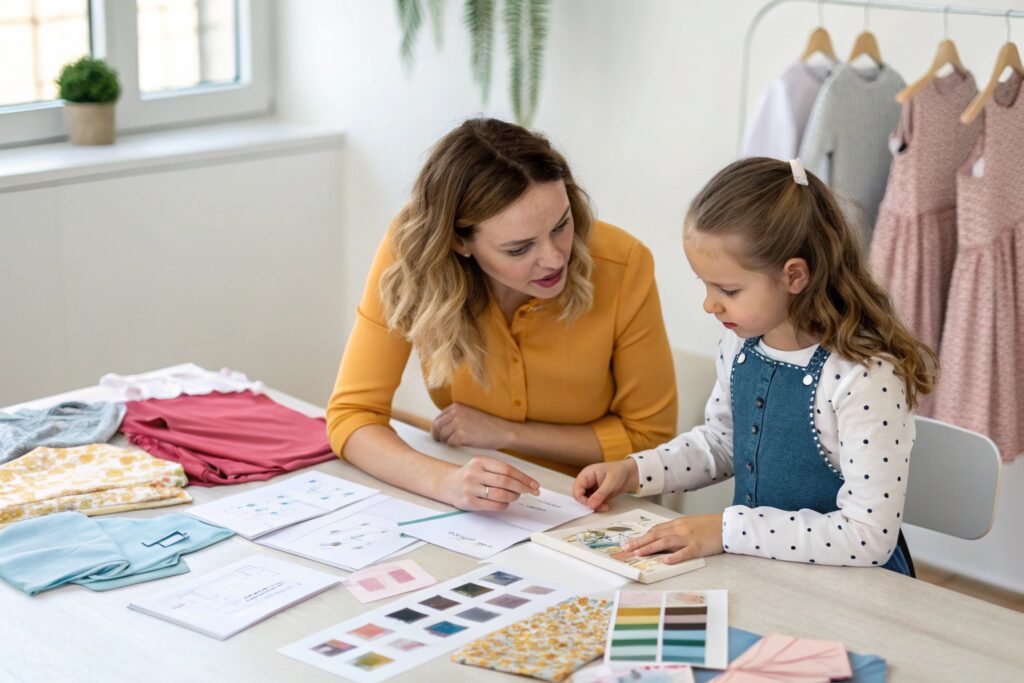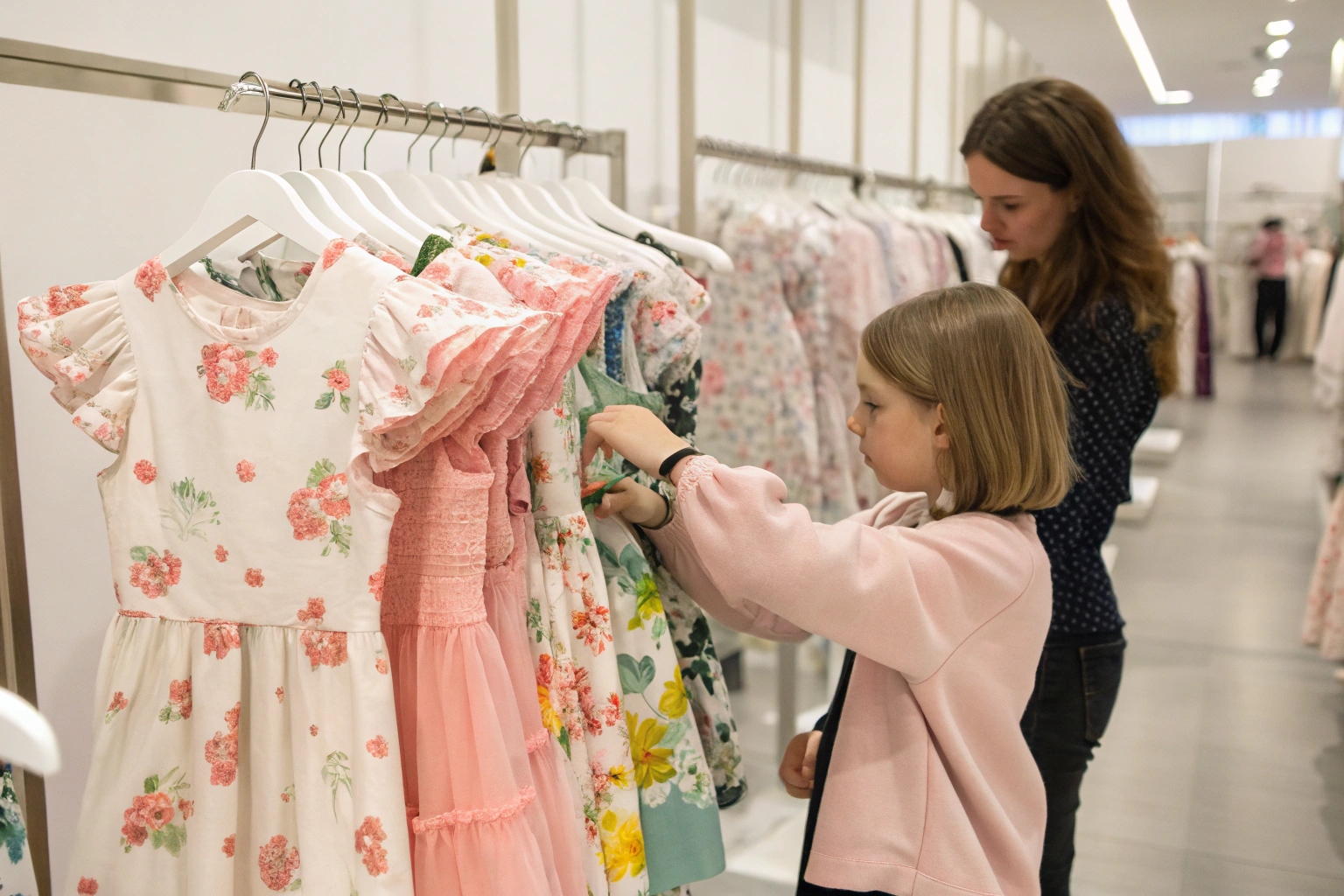Tired of overpaying for kids dresses that don’t meet quality expectations? You’re not alone. Many buyers struggle to find reliable platforms that offer trendy, affordable, and high-quality children's wear in bulk.
You can get kids dresses online through trusted wholesale platforms, verified OEM suppliers, and kidswear-focused websites. The key is balancing style, price, and reliability from bulk-friendly sources that deliver consistent product quality.
If you’re sourcing for a brand or retail operation, finding the right kidswear supplier is crucial. Let’s explore the best online options for sourcing kids dresses and how to identify partners that meet your exact needs.
Which websites sell kids dresses in bulk?
Finding bulk kidswear online can feel overwhelming. There are countless sites, but not all cater to quality-conscious buyers or offer reasonable minimum order quantities (MOQs).
Websites like Alibaba, Faire, FashionTIY, and independent factory-owned sites provide bulk kids dresses at competitive rates. These platforms allow you to compare suppliers, designs, and lead times in one place.

What makes a wholesale platform ideal for kidswear sourcing?
Not all wholesale websites are created equal. Some are general marketplaces flooded with unverified sellers, while others cater specifically to apparel buyers and factory-direct supply. The ideal platform should offer verified suppliers, clear certifications, flexible MOQs, and organized catalogs for seasonal and classic styles. For instance, Faire and FashionTIY are great for boutique retailers, while factory websites like ours focus on OEM service and bulk customization.
Which sites have the best MOQ and shipping terms?
When buying in bulk, low MOQs and fast fulfillment matter. Some wholesale sites like FashionGo cater to American buyers with domestic warehouses, making shipping quicker. Others, like Alibaba, require negotiating MOQs directly with each supplier. Factory websites often list MOQ clearly and allow email or WhatsApp communication for customization. Choose platforms that offer shipping options like DDP or sea freight for larger orders, so you can manage costs efficiently.
Bulk kidswear sourcing depends on a mix of affordability, variety, and trust. Platforms like Alibaba are still leading globally, but only if you carefully vet each supplier. Look for product listings with high review counts, detailed fabric descriptions, and real photos. Some B2B websites also now include integrated escrow payments or sample request options, helping new buyers test product quality before committing. Meanwhile, niche fashion wholesale platforms often offer pre-curated kidswear lines with fixed pricing and fixed minimums. They’re excellent for boutique resellers who need curated selections but don’t want to deal with complex logistics. Some factory-owned sites (like ours) combine both approaches: offering in-house design, low MOQ, and full shipping support. If you're buying from the US or Europe, always double-check if the supplier has handled export compliance like CPSIA (US) or REACH (EU).
Where to find trendy girls' dresses online?
Trendy designs often drive kidswear sales—but many wholesalers offer outdated styles or poor design details that don’t appeal to today’s parents or kids.
You can find trendy girls’ dresses online through fashion-forward wholesale sites, boutique platforms, and OEM factories with in-house design capabilities that follow seasonal trends.

What design trends matter most in kidswear dresses?
Modern parents seek a balance of style and practicality. Dresses with soft fabrics, floral or minimal prints, puff sleeves, layered tulle, and pastel colors dominate today’s girl fashion. Also, eco-conscious styles like organic cotton or linen blends are rising. Retailers need suppliers that not only follow trends but also customize designs for their buyers. Platforms like ours release new seasonal collections every few months to reflect global kidswear trends. This way, buyers can refresh their catalog without depending on slow-moving stock.
Which suppliers actually follow fashion trends?
Many platforms claim to offer trendy items, but not all back that with product innovation. Verified fashion-forward OEM factories are your best bet. They monitor European and US seasonal style trends and develop patterns accordingly. Their advantage over generic wholesalers is speed: they prototype and scale trendy designs within weeks. Factory partners that invest in in-house design teams or digital trend forecasting software can give your brand a head-start.
Girls’ fashion evolves quickly—so your supplier must be flexible and trend-aware. While some resellers rely on stock photos or generic styles, professional buyers know the power of exclusive designs. If you want to stand out in crowded kidswear markets, partner with a manufacturer that allows color swaps, trims customization, and fabric upgrades for each design. This flexibility lets you take a "trendy base dress" and make it yours. We recommend combining evergreen silhouettes like A-line dresses with trending elements—think natural dyes, embroidery, or sheer layers. Platforms that allow such flexibility (including ours) reduce the need for in-house designers while still giving your catalog a unique flair. Whether you target boutiques or online stores, your product must meet both parents’ fashion expectations and kids’ comfort needs.
Are OEM kidswear platforms good for buyers?
Many B2B buyers hesitate to use OEM platforms because of unclear processes, language barriers, or concerns about quality.
OEM platforms are ideal for bulk kidswear buyers who want brand customization, consistent quality, and better margins than standard wholesale resellers.

What is OEM and how does it benefit kidswear sourcing?
OEM (Original Equipment Manufacturing) means a factory produces clothing based on your brand’s requirements—logos, tags, packaging, and even patterns. This model offers more flexibility and brand value compared to reselling generic stock. If you want to sell girls' dresses under your own label or enter retail chains, OEM is essential. OEM platforms often allow small MOQs for new buyers and provide support with fabric swatches, sample runs, and style tech packs.
How to evaluate a good OEM platform?
Choose OEM suppliers who display their certifications (like GOTS or BSCI), show real factory photos, and allow communication with merchandisers—not just sales reps. An OEM platform must offer sample approval processes, order tracking, and shipping advice. You can find such partners through directories like Global Sources, or by going directly to factory-owned sites like ours. Make sure they support your preferred payment terms and offer contract-level production guarantees.
OEM manufacturing is more than just placing a logo on a dress. It’s a partnership. Your supplier must understand your target market, provide material options that suit local regulations, and ship on time. The best OEM platforms give you control over fabric selection, label placement, and sizing charts. Some even support influencer collaboration or video content for your e-commerce store. A common pitfall for buyers is ignoring the communication pipeline—slow replies or vague timelines often mean trouble. A dedicated account manager on your OEM platform prevents misunderstandings and speeds up sampling. Our experience shows that when you invest time in building a strong relationship with your OEM partner, you get smoother production cycles, better negotiation terms, and fewer quality issues. For buyers with mid-size or growing businesses, OEM is a smarter long-term strategy than chasing random wholesale lots.
How to choose reliable kids dress suppliers?
You may find hundreds of suppliers online, but only a few deliver consistent quality, service, and pricing transparency.
To choose a reliable kids dress supplier, check certifications, request samples, ask about MOQs, review past client feedback, and confirm communication responsiveness.

What are the red flags when choosing a supplier?
Avoid suppliers with generic product photos, unclear shipping terms, or who refuse to show factory credentials. Beware of unusually low prices without detailed breakdowns—they often lead to poor stitching, incorrect sizing, or shipment delays. Trustworthy suppliers are upfront about what’s customizable, how long lead times are, and what happens if issues arise. They also help you understand compliance for babywear—like lead content and flammability regulations in your target market.
What checklist helps verify supplier reliability?
Here’s a simple verification checklist:
| Criteria | Why It Matters |
|---|---|
| Certifications (CPSIA, GOTS, BSCI) | Ensures safety & ethical production |
| Sampling Process | Lets you confirm material and fit |
| Lead Time Clarity | Avoids missed seasonal deadlines |
| MOQ Flexibility | Supports growing businesses |
| Client Testimonials | Builds trust through experience |
| Payment & Refund Terms | Reduces financial risk |
Reliable kids dress suppliers do more than make clothes—they become your quality gatekeeper and production partner. When sourcing, begin by narrowing down by region (like Asia), then focus on product specialization. Does the factory mostly make dresses, or do they do all kidswear categories? Niche producers often have stronger quality control. Then, look at capacity. Do they have enough sewing lines to meet your peak orders? Finally, test communication. Quick, clear answers are often the biggest green flag for reliability. Use trial orders to test logistics and packaging quality. And never underestimate the importance of post-sale support—especially for replacements or urgent reorders. A supplier’s response during a problem often tells you more than any sales pitch ever could.
Conclusion
Finding the best kids dress supplier online means combining trend insight, supplier vetting, and platform selection. Focus on those who offer flexibility, proof of quality, and reliable communication.










